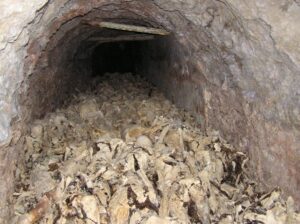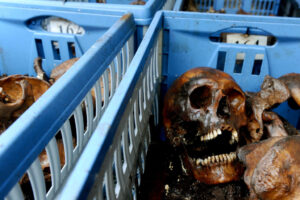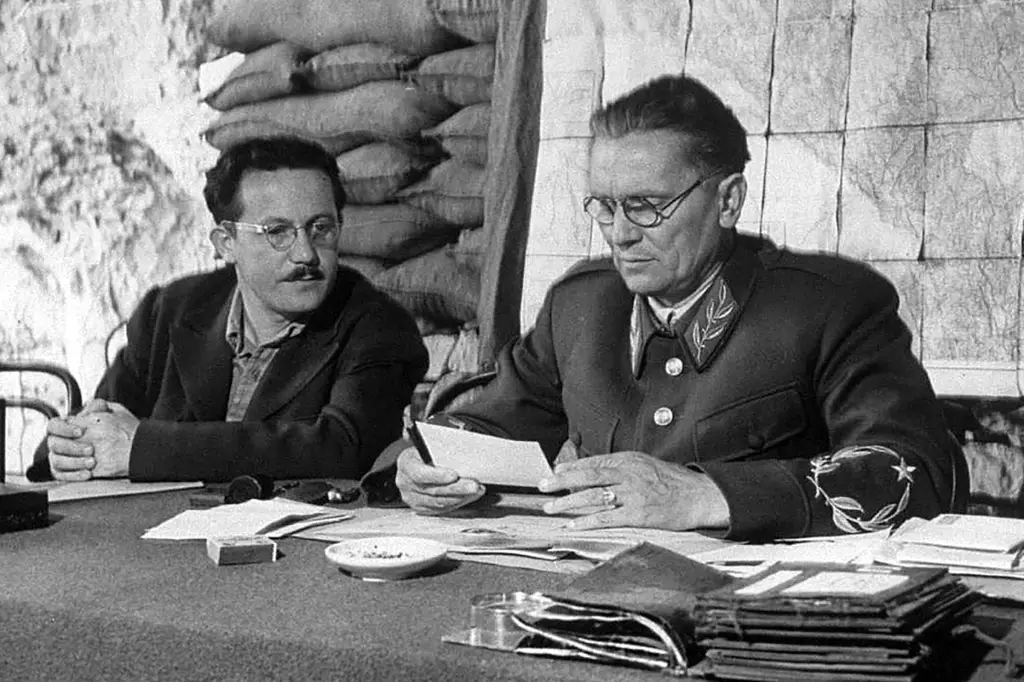This May marks the 80th anniversary of the end of the Second World War – a date that the ruling left and its associated institutions present as a glorious moment in Slovenian history. Ceremonies, speeches about “freedom”, “victory over fascism”, and the “national liberation movement”, the raising of flags and the worship of the partisan myth are taking place all over the country. But a look at the other side of the coin is considerably less solemn – even chilling. The end of the war did not bring freedom, but the beginning of the greatest slaughter of the Slovenian and other Yugoslav peoples in their entire history.
The 9th of May 1945 did not mark the beginning of a democratic future for the Slovenians. Instead of breathing a sigh of freedom after the defeat of Nazism and fascism, the Slovenian nation fell into a new form of totalitarianism. The Communist Party had established a complete monopoly of power. Slovenia’s “liberator” was, in fact, a regime which, in the first post-war years, acted on the Stalinist model and unreservedly dealt with its opponents – whether political, class or ideological.
Just after the end of the war, the systematic extermination of prisoners, civilians and all those whom the new rulers labelled “enemies of the people” began, without trials, without judicial processes – in the midst of forests, mines, chasms and ravines.
Slovenia – the land of hidden burial sites
More than 700 concealed mass grave sites have been recorded in Slovenia, among which the following locations stand out. Kočevski Rog – one of the most famous killing sites, where thousands of Croatians, Slovenians and Serbians were killed, mostly soldiers of the Home Guard and civilians who were misled by promises of amnesty. Huda Jama, Barbara’s pit – a symbol of the hidden atrocity, where in 2009, the remains of more than 1,400 victims were discovered, many bound with wire. Tezno near Maribor – probably the largest mass grave site in Europe, where more than 15,000 people, mainly Croatians returning from Austria after the end of the war, are believed to have been buried. The scale of these crimes is unparalleled in Slovenian history. And yet – the authorities remain silent about it.

Croatia remembers – Slovenia still keeps quiet
These days, commemorations are taking place, for example, across Croatia to remember the victims of post-war killings – in Macle, Tezno and Pliberk. Representatives of the state, the Church, veterans and civil society are taking part in the ceremonies. Croatia publicly acknowledges the pain caused by communism.
In Slovenia, meanwhile, in spite of all the official ceremonial bustle, there has not been a single government commemoration for the tens of thousands who were murdered. On the contrary, the current authorities abolished the day of remembrance for the victims of communist violence and closed the Museum of Slovenian Independence.
Left-wing authorities and historical selectivity
The ruling left, which still draws – ideologically and in terms of personnel – from the post-war partisan-communist tradition, avoids any serious reflection on these events. What is more, it is systematically erasing the traces of the totalitarian past. It ambiguously glorifies communism as “socialism with a human face”, while waving its hand at the mass killings, concentration camps, rigged trials and confiscations.

The proponents of this understanding of history often claim that these are “grievances of the past”, “victors’ justice” – or that the victims “collaborated with the occupier”. Such discourse not only blames the victims – it also completely overlooks the thousands of completely innocent civilians, children, women and priests who ended up in the abysses without a proper trial, without graves and without a name.
Did the 1991 “independence” happen?
Although communist repression eased somewhat over the years after the end of the war, real democratisation never took place. In one of its decisions, the Constitutional Court of the Republic of Slovenia clearly stated that the systematic and sustained repression of human rights and fundamental freedoms lasted not only for a few years after the war, but from the 9th of May 1945 until the first free elections in 1990 – a period of 45 years. This means that throughout this time, Slovenia was under a totalitarian regime that prevented political pluralism, suppressed freedom of speech and repressed opponents of the authorities.
That is why, on the 9th of May, we are not celebrating the 80th anniversary of liberation, but merely the expulsion of one occupier and the onset of another oppression. The real liberation could be said to have come only in 1991, when Slovenia embarked on the path of democracy, respect for human rights and the rule of law with the declaration of independence, and even in this case, democracy has still not been fully established because of the post-communist left, which has been in power with minor interruptions until today, as Dr Milko Mikola, the first director of the Study Centre for National Reconciliation, has clearly enlightened us.
A. G.


